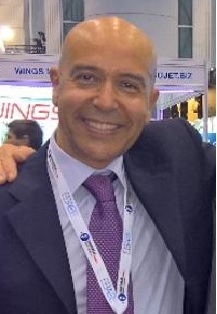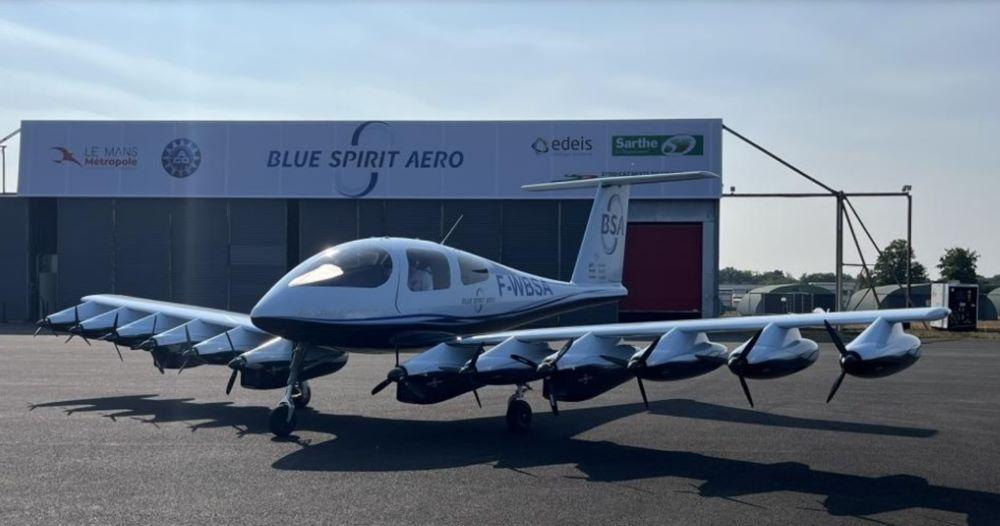Blue Spirit Rolls Out Dragonfly Hydrogen-Electric Four-Seater
Details
More Products & Services
Products & Services
Aerospace | Aviation Week Network
Aviation Week Network
https://aviationweek.com/themes/custom/particle/dist/app-drupal/assets/awn-logo.svg
Home - Aviation Group Marketing
Aviation Week Network
120 data points on over 156,000 commercial and business aviation aircraft, including military transports. Discover the most trustworthy resource for the complete aircraft history, plus ad hoc reports, month-over-month trend analysis and details on expected deliveries through 2050.
People

Andrea Rossi Prudente
Aviation Week Network

Anthony Lim
Aviation Week Network
Sales director

Becca Balmes
Aviation Week Network

Belinda Tan
Aviation Week Network

Brian Everstine
Aviation Week Network
Editor

Eddie Krankowski
Aviation Week Network
Assistant Manager, Tradeshows

erving dockery
Aviation Week Network

Lisa Tan
Aviation Week Network
Senior Marketing Manager

Mark Thomas
Aviation Week Network
Description
French startup Blue Spirit Aero has rolled out a full-scale prototype of its Dragonfly four-seat hydrogen-electric light aircraft.
At the unveiling at Le Mans Arnage Airport on June 10, the aircraft taxied under its own power to a hydrogen distribution station and demonstrated refueling.
The Dragonfly is equipped with 12 electric motors, each with its own fuel cell, housed in replaceable pods under the wing. With a maximum takeoff weight of 1,800 kg (4,000 lb.), the aircraft is designed to fly 375 nm at 125 kt. (143.8 mph). A six-seat version is also planned.
Combined, the distributed propulsion units produce 180 kW, but the aircraft noise level is less than 70 dB, Blue Spirit Aero (BSA) says. Takeoff noise for the Cirrus SR22 four-seater is about 83 dB(A). With the slipstream from 12 propellers blowing over the wing, the Dragonfly can take off in 985 ft.
The Dragonfly was unveiled on the eve of the 24 Hours of Le Mans motor race, at the racecourse where the Wright brothers made the first public flight of the Flyer on Aug. 8, 1908. The prototype is planned to be on static display at the Paris Air Show on June 16-22.
The green hydrogen refueling station installed at Le Mans Airport was installed for the unveiling by Atawey, BSA's technology partner. “We were able to validate the reliability of our propulsion system, the robustness of the on-airfield hydrogen refueling system and the overall integration of our technical innovations under real-world conditions,” BSA founder and President Olivier Savin said in a statement.
The prototype will now be prepared for test flights, says BSA, which is aiming for European Union Aviation Safety Agency CS-23 certification of the Dragonfly in 2026 and entry into service in 2027. The startup has received funding support from France's Occitanie region and public sector investment bank Bpifrance.
At the unveiling at Le Mans Arnage Airport on June 10, the aircraft taxied under its own power to a hydrogen distribution station and demonstrated refueling.
The Dragonfly is equipped with 12 electric motors, each with its own fuel cell, housed in replaceable pods under the wing. With a maximum takeoff weight of 1,800 kg (4,000 lb.), the aircraft is designed to fly 375 nm at 125 kt. (143.8 mph). A six-seat version is also planned.
Combined, the distributed propulsion units produce 180 kW, but the aircraft noise level is less than 70 dB, Blue Spirit Aero (BSA) says. Takeoff noise for the Cirrus SR22 four-seater is about 83 dB(A). With the slipstream from 12 propellers blowing over the wing, the Dragonfly can take off in 985 ft.
The Dragonfly was unveiled on the eve of the 24 Hours of Le Mans motor race, at the racecourse where the Wright brothers made the first public flight of the Flyer on Aug. 8, 1908. The prototype is planned to be on static display at the Paris Air Show on June 16-22.
The green hydrogen refueling station installed at Le Mans Airport was installed for the unveiling by Atawey, BSA's technology partner. “We were able to validate the reliability of our propulsion system, the robustness of the on-airfield hydrogen refueling system and the overall integration of our technical innovations under real-world conditions,” BSA founder and President Olivier Savin said in a statement.
The prototype will now be prepared for test flights, says BSA, which is aiming for European Union Aviation Safety Agency CS-23 certification of the Dragonfly in 2026 and entry into service in 2027. The startup has received funding support from France's Occitanie region and public sector investment bank Bpifrance.

Share
Recent Chats
Share via email
Future: handle WhatsApp here
Future: handle LinkedIn here
Future: handle Twitter here
SUBMENU HERE
Share via Chat
Copy Link

